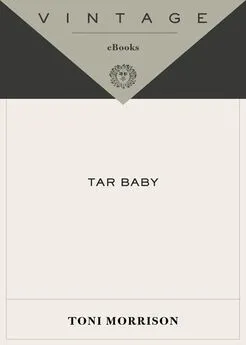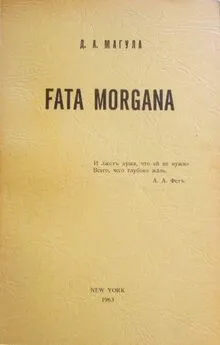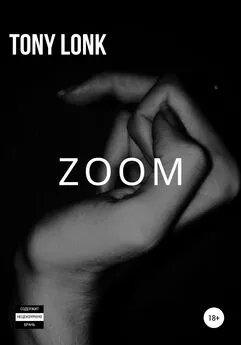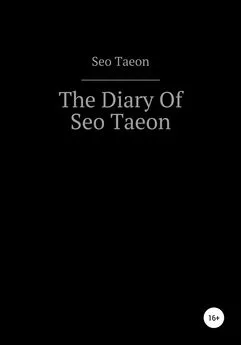Toni Morrison - Sula
- Название:Sula
- Автор:
- Жанр:
- Издательство:неизвестно
- Год:неизвестен
- ISBN:нет данных
- Рейтинг:
- Избранное:Добавить в избранное
-
Отзывы:
-
Ваша оценка:
Toni Morrison - Sula краткое содержание
Sula - читать онлайн бесплатно полную версию (весь текст целиком)
Интервал:
Закладка:

Contents
TITLE PAGE
DEDICATION
EPIGRAPH
FOREWORD
PART ONE
1919
1920
1921
1922
1923
1927
PART TWO
1937
1939
1940
1941
1965
ABOUT THE AUTHOR
ALSO BY TONI MORRISON
ACCLAIM FOR TONI MORRISON’S SULA
COPYRIGHT
It is sheer good fortune to miss
somebody long before they leave you.
This book is for Ford and Slade, whom
I miss although they have not left me.
“Nobody knew my rose of the world
but me…. I had too much glory.
They don’t want glory like that
in nobody’s heart.”
—The Rose Tattoo
FOREWORD
In the fifties, when I was a student, the embarrassment of being called a politically minded writer was so acute, the fear of critical derision for channeling one’s creativity toward the state of social affairs so profound, it made me wonder: Why the panic? The flight from any accusation of revealing an awareness of the political world in one’s fiction turned my attention to the source of the panic and the means by which writers sought to ease it. What could be so bad about being socially astute, politically aware in literature? Conventional wisdom agrees that political fiction is not art; that such work is less likely to have aesthetic value because politics—all politics—is agenda and therefore its presence taints aesthetic production.
That wisdom, which seems to have been unavailable to Chaucer, or Dante, or Catullus, or Sophocles, or Shakespeare, or Dickens, is still with us, and, in 1969 it placed an inordinate burden on African American writers. Whether they were wholly uninterested in politics of any sort, or whether they were politically inclined, aware, or aggressive, the fact of their race or the race of their characters doomed them to a “political-only” analysis of their worth. If Phillis Wheatley wrote “The sky is blue,” the critical question was what could blue sky mean to a black slave woman? If Jean Toomer wrote “The iron is hot,” the question was how accurately or poorly he expressed chains of servitude. This burden rested not only on the critics, but also on the reader. How does a reader of any race situate herself or himself in order to approach the world of a black writer? Won’t there always be apprehension about what may be revealed, exposed about the reader?
In 1970, when I began writing Sula, I had already had the depressing experience of reading commentary on my first novel, The Bluest Eye, by both black and white reviewers that—with two exceptions—had little merit since the evaluation ignored precisely the “aesthetics only” criteria it championed. If the novel was good, it was because it was faithful to a certain kind of politics; if it was bad, it was because it was faithless to them. The judgment was based on whether “Black people are—or are not—like this.” This time out, I returned the compliment and ignored the shallowness of such views and, again, rooted the narrative in a landscape already tainted by the fact that it existed. Only a few people would be interested, I thought, in any wider approach—fewer than the tiny percentage of the fifteen hundred who had bought the first book. But the act of writing was too personally important for me to abandon it just because the prospects of my being taken seriously were bleak. It may be difficult now to imagine how it felt to be seen as a problem to be solved rather than a writer to be read. James Baldwin, Ralph Ellison, Richard Wright, Zora Neale Hurston—all had been called upon to write an essay addressing the “problem” of being a “Negro” writer. In that no-win situation—inauthentic, even irresponsible, to those looking for a politically representative canvas; marginalized by those assessing value by how “moral” the characters were—my only option was fidelity to my own sensibility. Further exploration of my own interests, questions, challenges. And since my sensibility was highly political and passionately aesthetic, it would unapologetically inform the work I did. I refused to explain, or even acknowledge, the “problem” as anything other than an artistic one. Other questions mattered more. What is friendship between women when unmediated by men? What choices are available to black women outside their own society’s approval? What are the risks of individualism in a determinedly individualistic, yet racially uniform and socially static, community?
Female freedom always means sexual freedom, even when—especially when—it is seen through the prism of economic freedom. The sexual freedom of Hannah Peach was my entrance into the story, constructed from shreds of memory about the way local women regarded a certain kind of female—envy coupled with amused approbation. Against her fairly modest claims to personal liberty are placed conventional and anarchic ones: Eva’s physical sacrifice for economic freedom; Nel’s accommodation to the protection marriage promises; Sula’s resistance to either sacrifice or accommodation. Hannah’s claims are acceptable in her neighborhood because they are nonfinancial and nonthreatening; she does not disturb or deplete family resources. Because her dependence is on another woman, Eva, who has both money and authority, she is not competitive. But Sula, although she does nothing so horrendous as what Eva does, is seen by the townspeople as not just competitive, but devouring, evil. Nel, with the most minimal demands, is seen as the muted standard.
Hannah, Nel, Eva, Sula were points of a cross—each one a choice for characters bound by gender and race. The nexus of that cross would be a merging of responsibility and liberty difficult to reach, a battle among women who are understood to be least able to win it. Wrapped around the arms of that cross were wires of other kinds of battles—the veteran, the orphans, the husband, the laborers, confined to a village by the same forces that mandated the struggle. And the only possible triumph was that of the imagination.
The job, of course, was summoning those perceptions in language that could express them. Sula stretched my attempts to manipulate language, to work credibly and, perhaps, elegantly with a discredited vocabulary. To use folk language, vernacular in a manner neither exotic nor comic, neither minstrelized nor microscopically analyzed. I wanted to redirect, reinvent the political, cultural, and artistic judgments saved for African American writers.
I was living in Queens while I wrote Sula, commuting to Manhattan to an office job, leaving my children to child-minders and the public school in the fall and winter, to my parents in the summer, and was so strapped for money that the condition moved from debilitating stress to hilarity. Every rent payment was an event; every shopping trip a triumph of caution over the reckless purchase of a staple. The best news was that this was the condition of every other single/separated female parent I knew. The things we traded! Time, food, money, clothes, laughter, memory—and daring. Daring especially, because in the late sixties, with so many dead, detained, or silenced, there could be no turning back simply because there was no “back” back there. Cut adrift, so to speak, we found it possible to think up things, try things, explore. Use what was known and tried and investigate what was not. Write a play, form a theater company, design clothes, write fiction unencumbered by other people’s expectations. Nobody was minding us, so we minded ourselves. In that atmosphere of “What would you be doing or thinking if there was no gaze or hand to stop you?” I began to think about just what that kind of license would have been like for us black women forty years earlier. We were being encouraged to think of ourselves as our own salvation, to be our own best friends. What could that mean in 1969 that it had not meant in the 1920s? The image of the woman who was both envied and cautioned against came to mind.
Elsewhere (in an essay “Unspeakable Things Unspoken”), I have detailed my thoughts about developing the structure of Sula. “Originally, Sula opened with ‘Except for World War II, nothing interfered with National Suicide Day.’ With some encouragement I recognized that sentence as a false beginning.” Falseness, in this case, meant abrupt. There was no lobby, as it were, where the reader could be situated before being introduced to the goings-on of the characters. As I wrote in that essay, “The threshold between the reader and the black-topic text need not be the safe, welcoming lobby I persuaded myself [ Sula ] needed at that time. My preference was the demolition of the lobby altogether. [Of all of my books], only Sula has this ‘entrance.’ The others refuse the ‘presentation,’ refuse the seductive safe harbor; the line of demarcation between…them and us. Refuse, in effect, to cater to the diminished expectations of the reader, or his or her alarm heightened by the emotional luggage one carries into the black-topic text…. [Although] the bulk of the opening I finally wrote is about the community, a view of it…the view is not from within…but from the point of view of a stranger—the ‘valley man’ who might happen to be there and to and for whom all this is mightily strange, even exotic….[In] my new first sentence I am introducing an outside-the-circle reader into the circle. I am translating the anonymous into the specific, a ‘place’ into a ‘neighborhood’ and letting a stranger in, through whose eyes it can be viewed.” This deference, paid to the “white” gaze, was the one time I addressed the “problem.”
Had I begun with Shadrack, as originally planned, I would have ignored the gentle welcome and put the reader into immediate confrontation with his wounded mind. It would have called greater attention to the traumatic displacement this most wasteful capitalist war had on black people, and thrown into relief their desperate and desperately creative strategies of survival. In the revised opening I tried to represent discriminatory, prosecutorial racial oppression as well as the community’s efforts to remain stable and healthy: the neighborhood has been almost completely swept away by commercial interests (a golf course), but the remains of what sustained it (music, dancing, craft, religion, irony, wit) are what the “valley man,” the stranger, sees—or could have seen. It is a more inviting embrace than Shadrack’s organized public madness—it helps to unify the neighborhood until Sula’s anarchy challenges it.
Outlaw women are fascinating—not always for their behavior, but because historically women are seen as naturally disruptive and their status is an illegal one from birth if it is not under the rule of men. In much literature a woman’s escape from male rule led to regret, misery, if not complete disaster. In Sula I wanted to explore the consequences of what that escape might be, on not only a conventional black society, but on female friendship. In 1969, in Queens, snatching liberty seemed compelling. Some of us thrived; some of us died. All of us had a taste.

In that place, where they tore the nightshade and blackberry patches from their roots to make room for the Medallion City Golf Course, there was once a neighborhood. It stood in the hills above the valley town of Medallion and spread all the way to the river. It is called the suburbs now, but when black people lived there it was called the Bottom. One road, shaded by beeches, oaks, maples and chestnuts, connected it to the valley. The beeches are gone now, and so are the pear trees where children sat and yelled down through the blossoms to passersby. Generous funds have been allotted to level the stripped and faded buildings that clutter the road from Medallion up to the golf course. They are going to raze the Time and a Half Pool Hall, where feet in long tan shoes once pointed down from chair rungs. A steel ball will knock to dust Irene’s Palace of Cosmetology, where women used to lean their heads back on sink trays and doze while Irene lathered Nu Nile into their hair. Men in khaki work clothes will pry loose the slats of Reba’s Grill, where the owner cooked in her hat because she couldn’t remember the ingredients without it.
Читать дальшеИнтервал:
Закладка:








